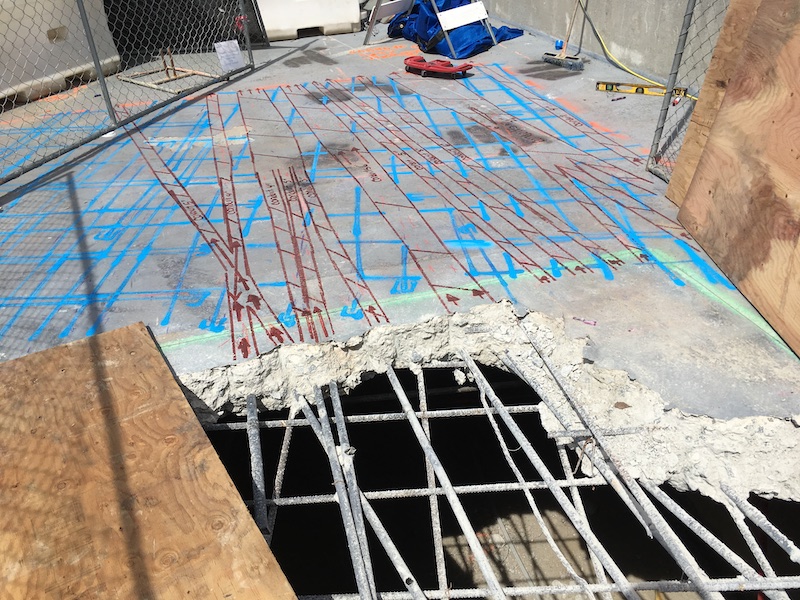Discovering the Depths: A Comprehensive Guide to Concrete Scanning and Its Diverse Applications
In the realm of construction and infrastructure advancement, the precise procedure of concrete scanning holds a critical function in ensuring the architectural honesty and security of projects. As innovation continues to evolve, the applications of concrete scanning have actually broadened far beyond plain surface-level assessments.
Significance of Concrete Scanning
Comprehending the importance of concrete scanning is important in guaranteeing the safety and stability of frameworks during construction and remodelling tasks. Concrete scanning makes use of sophisticated technologies such as ground-penetrating radar (GPR) and electromagnetic induction to find embedded things, spaces, or various other abnormalities within concrete structures - RainierGPR Concrete Scanning. By performing thorough scans prior to drilling, cutting, or coring into concrete, building and construction groups can stay clear of unintended damages to essential structural aspects like rebar, conduits, or post-tension wires. This positive strategy not only avoids expensive fixings and project hold-ups however likewise enhances general construction safety by reducing the threat of structural failings or collapses because of endangered stability.
Furthermore, concrete scanning plays a crucial function in making certain compliance with building regulations and regulations that mandate the security of existing architectural parts during building and construction activities. By precisely drawing up the interior make-up of concrete, scanning modern technologies enable building experts to make enlightened choices that promote the architectural security and sturdiness of buildings and infrastructure jobs. Basically, the significance of concrete scanning lies in its capacity to guard both the structural honesty and the workers associated with construction undertakings.
Technologies Used in Concrete Scanning
Concrete scanning relies on sophisticated innovations such as ground-penetrating radar (GPR) and electromagnetic induction to accurately spot embedded things and abnormalities within concrete frameworks. Ground-penetrating radar operates by emitting high-frequency electro-magnetic waves right into the concrete. When these waves encounter various materials or voids within the concrete, they recover to the surface area, allowing the GPR system to develop a detailed subsurface image. This innovation is specifically reliable in situating rebar, post-tension cords, channels, and other objects installed in concrete.
Electro-magnetic induction, on the various other hand, works by creating magnetic fields around a concrete structure with a transmitter coil. When steel objects are present within the concrete, they disrupt these electro-magnetic fields, creating eddy currents to flow through the metal. By measuring the adjustments in the magnetic fields with a receiver coil, the system can pinpoint the place of metallic things in the concrete.
These advanced technologies play a critical role in non-destructive screening, guaranteeing the safety and stability of concrete frameworks in various sectors.
Applications in Building And Construction Industry
Within the building market, concrete scanning innovation locates varied applications that boost task efficiency and safety and security. One vital application is the detection of rebar, post-tension cable televisions, and various other ingrained objects before drilling or cutting right into concrete structures. By properly mapping out these aspects, construction groups can prevent costly damages, ensure architectural honesty, and protect against potential safety risks. In addition, concrete scanning is utilized for finding gaps, such as air pockets or locations of wear and tear within concrete, which can endanger the overall stamina of a framework. By identifying these spaces beforehand, building and construction experts can take required measures to address them and maintain the resilience of the structure. Additionally, concrete scanning plays an essential role in quality assurance by verifying the thickness of concrete covers over support, ensuring conformity with layout specs and requirements. On the whole, the applications of concrete scanning in the building and construction industry add significantly to simplifying project process, minimizing dangers, and delivering premium results.

Safety Advantages of Concrete Scanning
In the world of building and construction safety and security, the implementation of concrete scanning modern technology provides an extremely important advantage in preemptively determining prospective dangers and fortifying structural stability. By making use of innovative scanning techniques such as ground-penetrating radar (GPR) and electro-magnetic induction, building and construction teams can precisely locate rebar, post-tension cables, avenues, and other concealed objects within concrete structures. This aggressive strategy considerably lowers the risk of unintentional strikes during boring, cutting, or coring tasks, therefore protecting against pricey problems, injuries, and project delays.
In addition, concrete scanning improves employee safety and security by offering real-time info concerning the structural problem of concrete aspects. By dealing with potential security problems promptly, concrete scanning contributes to creating a protected functioning environment and alleviating the chance of architectural failures or crashes on construction sites.
Future Trends in Concrete Scanning
Arising innovations in scanning technology are poised to reinvent the area of concrete inspection and analysis. websites By using the power of AI, these systems can examine vast quantities of information collected throughout scanning procedures to provide even more detailed and precise insights right into the problem of concrete frameworks.
One more substantial fad is the development of more portable and straightforward scanning devices. Miniaturization of scanning tools allows for simpler accessibility to confined rooms and remote locations, making assessments a lot more extensive and effective. Furthermore, innovations in wireless communication modern technologies make it possible for real-time information transfer and evaluation, facilitating quicker decision-making procedures.
Additionally, there is an expanding concentrate on sustainability in concrete scanning modern technologies - RainierGPR Concrete Scanning. Suppliers are progressively including green materials and energy-efficient functions into their devices to reduce environmental impact. These future patterns are readied to enhance the performance, precision, and sustainability of concrete scanning techniques, forming the market's future landscape
Conclusion
In final thought, concrete scanning plays a vital function in the building market by making sure the safety and security and effectiveness of numerous jobs. As modern technology advances, the future of concrete scanning holds encouraging growths for Go Here improving building processes.
